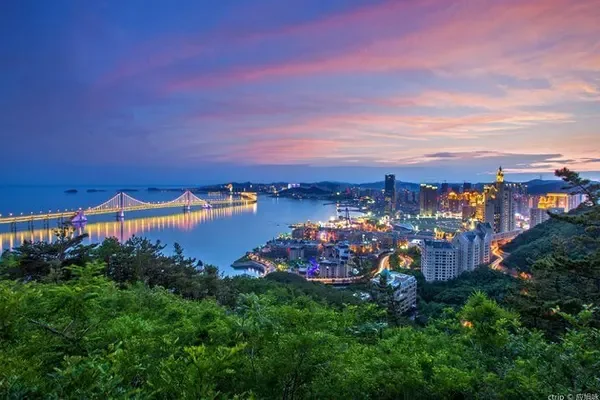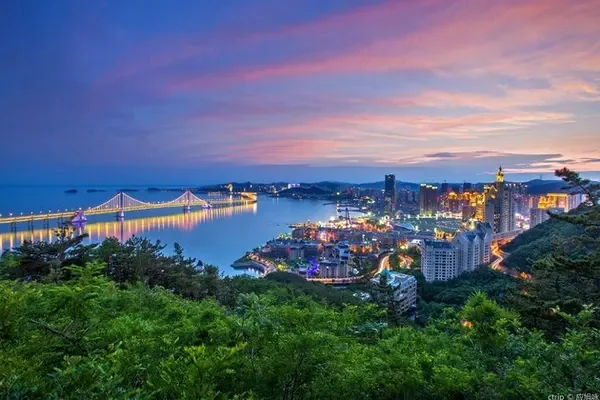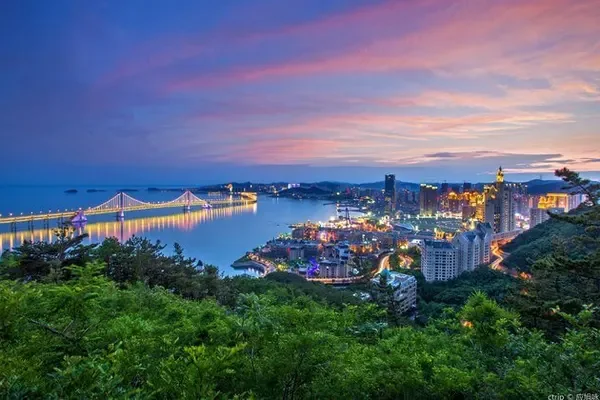The Western Xia Royal Tombs in Ningxia have the reputation of "Oriental Pyramid". On October 1, 2007, the reporter followed the first stop of the "Self-driving Ningxia, Shaanxi, Shanxi--Searching for the Lost Nation Xixia Tour" organized by Beijing Music Station and China Car Sunshine. That is to say, I paid homage to the tombs of the Xixia kings located in Yinchuan, Ningxia.

In the early morning of October 1, car enthusiasts drove their beloved cars from all directions in the capital to the Baige Service Area of Badaling Expressway to gather. The convoy set off at around 6:30, passed through Hebei and Inner Mongolia, and arrived in Yinchuan, the capital of Ningxia Hui Autonomous Region, around 11:00 that night. A total of more than 1200 kilometers were traveled that day.

On October 2, most of the riders who had a good night's sleep due to the fatigue of the previous day started their journey in Yinchuan, Ningxia, refreshed and refreshed. In the morning, the convoy went to the famous Tombs of Xixia Kings. Here, car enthusiasts paid homage to the mysterious Tomb of Xixia King with great interest.

The mysterious Mausoleum of Xixia is a bright cultural pearl at the foot of Helan Mountain in the west of Yinchuan. Unlimited attraction. Xixia is a feudal dynasty established in the early eleventh century in my country with the Dangxiang Qiang as the main body. In 1038, Yuan Hao proclaimed himself emperor in Xingqing Mansion (Yinchuan City), and was destroyed by Mongolia in 1227. It has existed for 190 years in history and experienced 10 generations of emperors.

Its territory is "the Yellow River in the east, Yumen in the west, Xiaoguan in the south, and the desert in the north, and the place is more than ten thousand miles away." At its peak, it covered an area of about 830,000 square kilometers, including most of today's Ningxia and Gansu, western Inner Mongolia, and northern Shaanxi. , eastern Qinghai, eastern Xinjiang and the vast areas of southern Mongolia. In the early stage, it was divided with the Northern Song Dynasty and Liaoping, and in the middle and late period, it stood in a tripod with the Southern Song Dynasty and the Jin Dynasty. The establishment of the Xixia Kingdom made positive contributions to the partial unification of Northwest my country in the Middle Ages, the development of social economy and culture, and the formation of a multi-ethnic family.

The Xixia Royal Mausoleum is the royal cemetery of the Xixia Dynasty, located in the middle of the eastern foot of Helan Mountain, about 35 kilometers away from the western suburbs of Yinchuan City, Ningxia. In the mausoleum area with a radius of 53 square kilometers, nine imperial tombs are arranged in an orderly manner, and 253 accompanying tombs are dotted around. It is one of the largest and most complete imperial cemeteries in China.

In 1988, it was announced by the State Council as a national key cultural relic protection unit and a national key scenic spot. Known as the "mysterious miracle" by the world. The current Xixia Royal Tomb is a tourist area centered on No. 3 Tomb. The Western Xia Royal Mausoleum is composed of Xixia Museum, Xixia Historical History Art Museum, Xixia Stele Forest and other landscapes, which fully demonstrates the profound history and culture of Xixia.

After entering the scenic spot, the riders took a sightseeing battery car and first came to visit the Xixia Museum. The Xixia Museum is the first museum in my country that presents the history of the rise and fall of the Xixia Kingdom with the Xixia Royal Mausoleum as the background. The whole building covers an area of 5,300 square meters. The architectural style of Xixia pagoda with dense eaves is unique in style. It not only has the momentum of modern architecture, but also echoes the ruins of the mausoleum area, forming a strong national architectural style.

The museum selects 671 most representative Xixia cultural relics, 413 volumes (articles) of monographs, papers, and magazine articles. There are mainly stone pillars carved with dragons, stone horses, glazed owl kisses, Xixia inscriptions, stone statue seats, Buddhist scriptures, Buddhist paintings, iron armor clothes, Xixia porcelain, official seals, etc.; On the wall of the building and courtyard, eight Xixia murals are selected and copied, showing the essence of Xixia grotto art, allowing people to appreciate the glory and splendor of the Xixia Kingdom in the past, and many historical mysteries, which arouse endless reveries for tourists.

Not far from the Xixia Museum is the Xixia History Art Museum. The Xixia Historical History Art Museum intuitively shows the main historical scenes of the rise and fall of Xixia and the once glorious Xixia civilization through 18 art scenes, 160 figure statues, and 6 miniature pagodas.

In the Art Museum of Xixia History, looking at the lifelike statues of figures and listening to the commentator's vivid explanation, people seem to see a living history of the rise and fall of the Xixia Dynasty. In the space for reverie, those shocking war scenes are like the shadows of swords and swords back then, and the sound of fighting with swords and swords seems to echo in the ears.

In the Xixia Historical History Art Museum, after coming out of the art gallery, the collection imitates the inscriptions left by Xixia, the remnants of the Xixia Mausoleum unearthed, the literati and poets of the past dynasties engraved in Xixia and Chinese characters, and modern poets describe the Xixia or Xixia Mausoleum. Poems, Western Xia calligraphy by foreign friends, and a total of 40 pieces of Xixia Steles came to the Xixia Royal Tomb.

The Mausoleum of the Xixia Kings is located on a strange desert grassland at the foot of Helan Mountain. When you enter the mausoleum area, you can have a panoramic view of nine Xixia emperor cemeteries and more than 200 burial tombs of princes and relatives. The mausoleum area is 10 kilometers long from north to south and 4 kilometers wide from east to west, covering an area of nearly 50 square kilometers. The scale is comparable to the Ming Tombs.

Influenced by Buddhist architecture, the Western Xia Royal Mausoleum organically combines Han culture, Buddhist culture, and Dangxiang national culture, forming a unique form of Chinese cemetery architecture. This vast and majestic architectural relic of the cemetery has left many unsolved mysteries to the world.

Relevant data records that the terrain around the Western Xia Royal Tombs is flat, with criss-crossing ditches and ridges washed out by mountain torrents. In these not-too-deep and not-too-wide torrent gullies, wild jujube trees, unique to the north, grow. The canopy is small, but the thick and shiny green leaves are very dense.

They are like green ribbons, intertwined densely and densely in the mausoleum area with a radius of 53 square kilometers, netting the tall and abrupt mausoleums. It is amazing that there is no mountain torrent ditch passing through the emperor's cemetery and the funeral cemetery. The Xixia Mausoleum was built for nearly a thousand years, and countless flash floods broke out in Helan Mountain. However, along the Helan Mountain line, only the Xixia Mausoleum area has not been hit by flash floods. What is the reason? It is still a "mystery".

The tallest and eye-catching building in the Xixia Mausoleum is a rammed earth mound with a residual height of 23 meters, which is shaped like a steamed bun. Careful observation shows that it is octagonal, with layers of residual tiles piled up on it, mostly five layers. Therefore, some scholars believe that it was an octagonal five-story solid pagoda with dense eaves before it was destroyed. But why does the tower building stand in the cemetery, and what are its functions and functions? Few people can make it clear. As for why this "tomb tower" was built at the northwest end of the cemetery, there are at least four theories in the academic circles, each of which has its own side, and it has been argued for more than ten years without a clear conclusion.

The wind and rain of Xixia, the party's elegy. Xixia has created brilliant achievements and splendid culture in the history of our country. Xixia culture is a cluster of wonderful flowers in the cultural garden of the Chinese nation, and Xixia writing is the most shining pearl among these wonderful flowers. Witness to the destruction of the Xixia Mausoleum.

According to literature records, the former royal tombs are distributed from south to north with gates, stele pavilions, moon city and palace city. In the palace city, there are buildings such as dedicated mausoleums and tower-shaped mausoleums. The mausoleum platform is built of rammed earth, with seven floors of octagonal, which are retracted layer by layer. shape. But now there are only rammed earth mausoleums, ruined walls and a piece of rubble.

After leaving the Xixia King's Mausoleum, the convoy drove to Xiguan Grand Mosque in Yinchuan to visit. According to historical records, the temple was first built in the twenty-sixth year of Emperor Kangxi of the Qing Dynasty (1687), and it was extremely small and crude at the beginning. After several expansions and repairs, a grand mosque was built in the second year of Guangxu (1876). Before 1949, a Sino-Arab Junior Primary School was attached. In 1958, the mosque was forced to close, and the temple building was used for other purposes. It was demolished during the "Cultural Revolution". In 1980, crowd-funding was resumed, and the main hall, imam's house, bath room, north and south wing rooms were successively built. In 1985, a two-story building was built in front of the main hall, two 16-meter-high Bunker Building and Wangyue Building. Later, due to the narrowness of the main hall and the messy overall layout, all the original buildings were demolished and rebuilt.

The current mosque was rebuilt in 1995, with compact layout and novel design. There are 3 existing buildings, and the north and south sides are two-story small buildings, which are the living room, study and living room for the imam and Manla. The worship hall faces west and east, with a height of 20 meters, divided into upper and lower floors, with a total construction area of 1,500 square meters, of which the worship hall is 410 square meters, which can accommodate more than a thousand people to worship.

The main hall is a reinforced concrete structure, which is extremely strong. The front corridors of the upper and lower floors are 8 large columns inlaid with dark yellow tiles, and the corridors on both sides of the first floor are 16 white columns. The front of the platform on the second floor is square steel flower railings, the lintels are potted on three sides, and glazed tiles overhang the eaves. The double doors and windows on the two floors of the main hall are inlaid with brown glass. The top of the main hall is a circular dome structure with a diameter of 9 meters, and there are two small domes on the side and back as a backdrop.

The large and small domes are all hollow, with skylights inside to increase the illuminance in the hall. On both sides of the front of the main hall stands a hexagonal Bunker Building, each 28 meters high, with a spiral staircase inside the building, which can be climbed to call for prayers. The central part of the Bunker Building is octagonal and pointed, with skylights opening to form a loft. Three balls are connected in series at the top of the upper part of the Bunker Tower, and the silver crescent moon is made of gold, which has a strong Arab-Islamic style. (Photo: Feng Ganyong)


